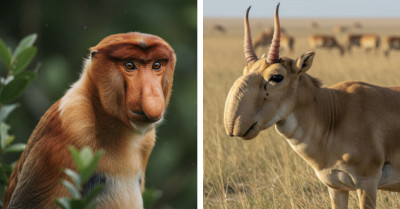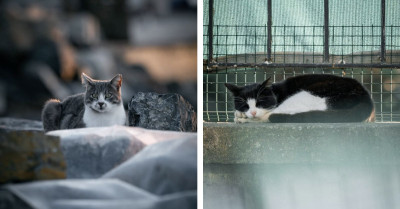Scientists Revive Dire Wolves After 10,000 Years And Pay Tribute To Game Of Thrones
Scientists have announced what they describe as a groundbreaking achievement: the return of the dire wolf species, believed to have been extinct for more than 10,000 years.
The announcement comes from Colossal Biosciences, a genetic engineering company specializing in “de-extinction.” The firm claims it has successfully created three wolf pups named Romulus, Remus, and Khaleesi, which it identifies as modern versions of dire wolves, a species once widespread across North America but long vanished from the natural world.
Colossal Biosciences has made headlines in recent years for its bold mission to resurrect extinct species, including high-profile plans to bring back the woolly mammoth. The birth of these pups marks what the company calls a major milestone in its work to restore lost biodiversity through advanced biotechnology.
On Monday, April 7, the company shared a video on X (formerly Twitter) showing two of the pups, Romulus and Remus, howling together. In the post, they wrote: “You’re hearing the first howl of a dire wolf in over 10,000 years. Meet Romulus and Remus, the world’s first de-extinct animals, born on October 1, 2024.”
A third pup, Khaleesi, named after the Game of Thrones character, was born on January 31.
Colossal explained that the pups were “brought back from extinction” using sophisticated genetic engineering techniques, marking what may be a new chapter in both conservation and science fiction turned reality.
Meet Romulus and Remus, the world’s first de-extinct animals.
Colossal Biosciences explained that the process relied on “genetic edits derived from a complete dire wolf genome, meticulously reconstructed by Colossal from ancient DNA found in fossils dating back 11,500 to 72,000 years.”
To establish viable cell lines, scientists used the grey wolf as a donor species, as it is considered the dire wolf’s closest living relative. By editing the grey wolf’s DNA in 20 locations across 14 specific genes, researchers were able to introduce key physical traits associated with dire wolves. These genetic changes influenced characteristics such as coat color and texture, overall body size, and muscle structure.
The resulting embryos were implanted into surrogate dogs, which carried the pregnancies to term and gave birth to the pups.
Although the newborns resemble dire wolves both in appearance and behavior, researchers acknowledge that they are not perfect genetic replicas. Due to gaps in the ancient DNA and unknown variables, scientists cannot yet determine exactly how many genetic differences defined the dire wolf as a distinct species from its relatives.
In the same post on X (formerly Twitter), Colossal stated: “From the beginning, our goal has been clear: ‘To revolutionize history and be the first company to use CRISPR technology successfully in the de-extinction of previously lost species.’
“By achieving this, we continue to push forward our broader mission—accepting humanity’s duty to restore Earth to a healthier state.”
Ethics of De-Extinction
Dr. Paul Root Wolpe, a bioethicist at Emory University, raises important ethical questions surrounding the de-extinction of species like the dire wolf. He emphasizes that reviving extinct species may lead to unforeseen ecological consequences that could disrupt existing ecosystems.
Wolpe argues that while the technology is fascinating, it poses risks, including habitat competition and the potential spread of diseases. He advocates for a cautious approach, suggesting that researchers should prioritize conservation efforts for endangered species instead of resurrecting those that have been lost for millennia.
The Genetic Engineering Perspective
Dr. George Church, a pioneer in synthetic biology and a co-founder of Colossal Biosciences, explains that genetic engineering can play a significant role in biodiversity conservation. His work focuses on understanding how genetic modifications could help in adapting living organisms to changing environments.
Church believes that responsibly applied genetic tools can save endangered species from extinction, suggesting that resources should be directed towards enhancing the genetic viability of critically endangered species. He stresses the importance of public dialogue on these advancements to create informed policy that balances innovation with ecological responsibility.
Healing Approaches & Techniques
The revival of the dire wolf raises significant questions about the ethics and implications of de-extinction efforts. Experts like Dr. Paul Root Wolpe caution that while technological advancements are exciting, they require careful consideration of ecological balance and ethical responsibility.
Moreover, professionals like Dr. George Church advocate for a focus on preserving existing endangered species as a priority. Engaging in public discourse and promoting informed policy-making can ensure that these groundbreaking scientific advancements contribute positively to biodiversity without compromising ecological integrity.



